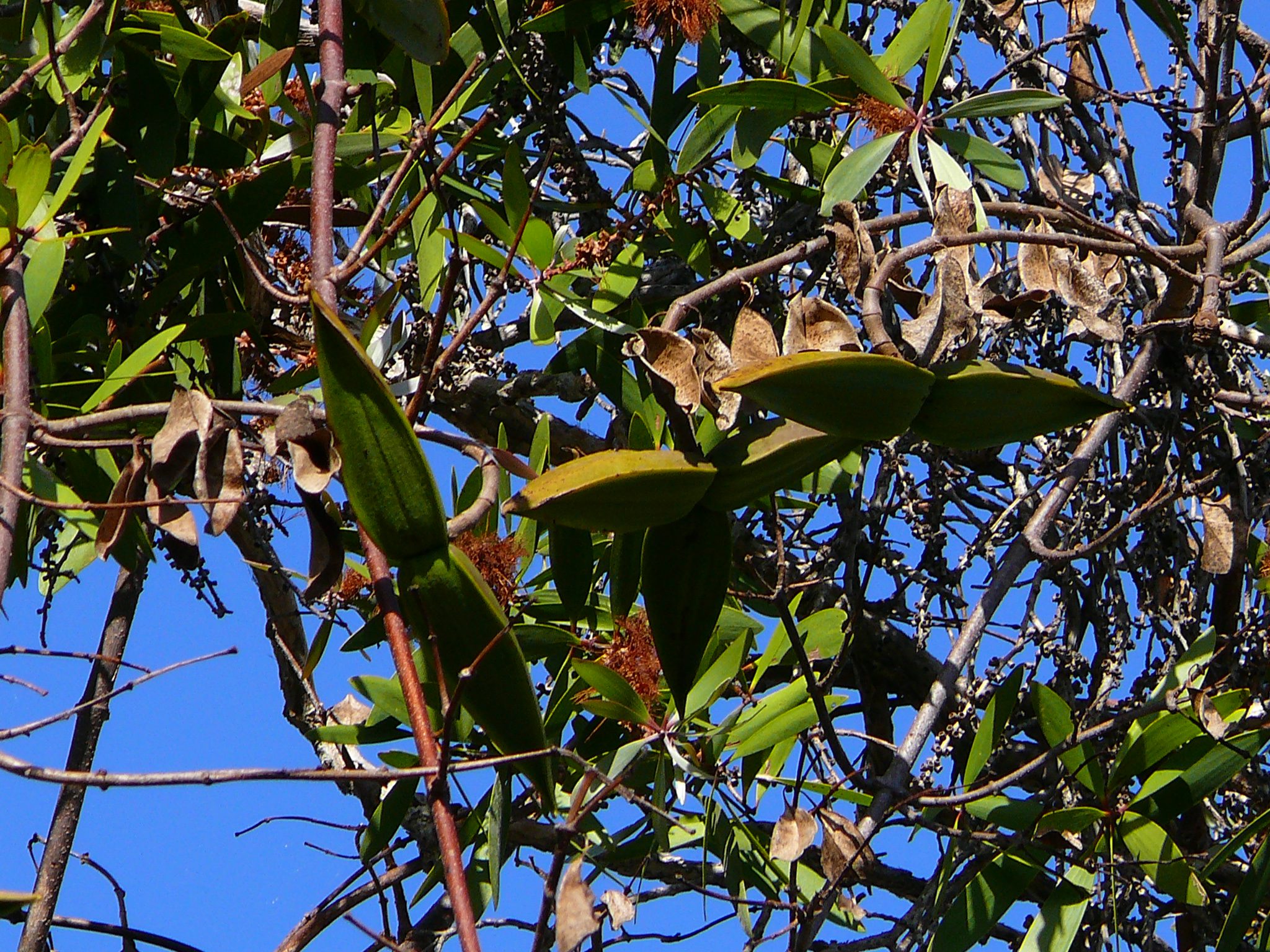Rubber vine
Cryptostegia grandiflora, Fam. Apocynaceae prev. Ascelpiadaceae










A twining vine that can reach to 30m high in trees or grow as scrambling shrub. Milky sap.
| Weed Category: |
Restricted invasive plants Category 3 Plants declared invasive under the Biosecurity Act 2014, that are present in QLD.
Not to be distributed or disposed of.
 Thirty-two WONS (Weeds of National Significance) have been identified because of their impact on primary production and the environment, potential for spread and socioeconomic impacts.
|
| Weed: | Yes |
| Form or habit: | Vine (Climbing, Twining or groundcover) |
| Family: | Apocynaceae prev. Ascelpiadaceae |
| Leaf: | Simple Opposite Simple, opposite ovate, 60-100 x 30-50mm, thick dark glossy green. Stalks often pink. |
| Flower conspicuous: | Conspicuous |
| Flower colour: |
White, Purple |
| Flower description: | Large tubular with five spreading lobes, about 50mm in diameter, white to pale purple; borne singly or in terminal umbels. |
| Fruit conspicuous: | Conspicuous |
| Fruit colour: |
Brown |
| Fruit: | Dry |
| Fruit description: | Brown, paired rigid follicles, 100-120 x 30-40mm, each with up to 450 seeds, about 8mm long and tipped with a tuft of white silky hairs, 10-35mm long. |
| Habitat: | |
| Distribution | |
| Food source for: | |
| Toxicity: | Toxic if ingested |
| Origin: | Madagascar |
| Notes: | Spread by: wind over long distances, water. Invades/threats: creek areas and outward onto floodplains, especially in drier parts of the region. Smothers native vegetation, forms dense thickets and reduces growth of pastures. May be toxic to livestock. Notes: rubber vine containment lines are in place north of Proserpine and west of Eton. Category 3 restricted invasive plant under the Biosecurity Act 2014, it must not be given away, sold, or released into the environment without a permit. The Act requires everyone to take all reasonable and practical steps to minimise the risks associated with invasive plants and animals under their control. This is called a general biosecurity obligation (GBO). |
| Information sources: | Mackay Regional Pest Management Group (2018) Weeds of the Mackay Whitsunday Region Second Edition. |